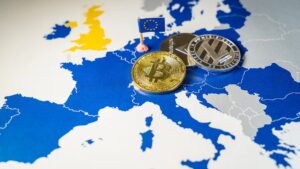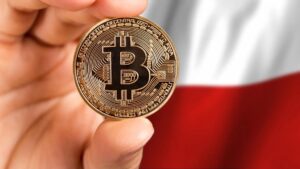TL;DR
- EURC surpasses €287 million, confirming its role as the leading non-USD stablecoin with sustained market inflows.
- Euro-denominated tokens expand their dominance while most other currency-based stablecoins continue to shrink.
- Institutional demand and cross-border payment adoption strengthen the position of euro stablecoins within digital settlement infrastructure.
Euro-denominated stablecoins attract renewed market attention as EURC advances with consistent growth and consolidates dominance in the non-USD category. The trend reflects rising liquidity demand from European users and platforms that increasingly rely on the euro for on-chain settlement, especially as regulated providers accelerate adoption across payment rails and blockchain-based financial services.
Euro stablecoins are the lone non-USD bright spot, with $EURC climbing to €287M. https://t.co/Mgx4SLlyVG pic.twitter.com/LNlwgiMbaE
— Artemis (@artemis) November 28, 2025
Euro Stablecoins Gain Strength Across Market Activity
Recent figures from Artemis show a clear transformation in stablecoin supply. Euro-backed assets now represent nearly the entire non-USD segment, while tokens tied to the Indonesian rupiah, Singapore dollar, Turkish lira, yen, and Brazilian real continue to contract. EURC climbs to €287 million, becoming the only expanding asset in a category that has otherwise weakened.
Payment companies and developers report steady integration of euro liquidity into remittance solutions, merchant operations, and regulated fintech frameworks. Market participants also highlight that euro settlement is gaining traction among smaller financial institutions seeking predictable liquidity instruments that fit compliance procedures across the European Union.
Institutional Adoption Supports EURC Expansion
Institutional activity reinforces the current pattern. Visa’s new initiative across Central and Eastern Europe, the Middle East, and Africa, developed in partnership with Aquanow, introduces faster settlement using approved stablecoins such as USDC. The collaboration aims to reduce operational friction and improve cross-border payment efficiency.
Although the program uses USDC, analysts note that the underlying structure offers room for broader euro stablecoin integration as financial institutions evaluate digital euro settlement pathways. Automated settlement windows and modernized back-end workflows indicate that stablecoins are becoming essential tools in payment infrastructure upgrades, especially as regional regulators refine digital asset guidelines and support controlled experimentation.

EURC’s upward trajectory also aligns with the strategy of European crypto service providers that introduce euro liquidity to support trading desks, treasury flows, and regional cross-border operations. Institutional desks observe stronger depth in euro trading pairs, reinforcing demand for assets with transparent reserves and predictable issuance.
EURC’s momentum signals the emergence of euro-backed stablecoins as a central pillar of non-USD liquidity. With institutional interest rising, regional adoption strengthening, and regulated digital payment infrastructure expanding, euro stablecoins appear positioned to maintain leadership in a more diversified global stablecoin environment.










